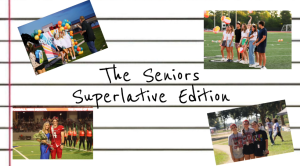Don’t Flip, it’s a Flop
February 22, 2018
Education has taken a turn in a new direction with the flipped classroom, an educational theory which has students watching video lessons at home and doing homework during their class time. This education trend has yet to be widely used here at Tomball. It has sparked a conflict within schools across the nation. If education really is a right that all people should be able to access, then schools should not force students to engage in a flipped system that denies them this right.
The flipped classroom offers students a chance to take control of their education. Educators will record lectures and post them onto a designated site to be viewed by the students at home, allowing parents to easily see the topics being discussed in class, and have direct input with their child’s learning. The lessons are able to be replayed for clarification or review at a later date, and are free from common classroom disruptions.Off topic conversations, fire drills, and disruptive behavior are nonexistent in video lessons, creating a learning environment that is much more focused and controlled. For the average, self motivated,middle class student, the flipped learning style seems to be a practical and beneficial option.
Although it is helpful to have these replayable video lessons, economic divisions will create a rift in the educational opportunities for students. Technology divides the flipped class, causing those without the capability to watch these videos to be outperformed by their more fortunate peers.
When topics are cumulative, misunderstanding one concept can throw a student’s understanding of an entire unit into disarray. Frustration, feelings of incompetence,and failure can cause a student to give up on the lesson completely. Despite having the ability to replay the video, there are certain questions that simply cannot be answered that way.
In the real world, especially today’s world, home life is not idyllic. They may not have a permanent place to sleep, much less an internet connection. Is it really fair to expect these students to watch lessons they cannot even access from home? The traditional classroom eliminates this divide, leveling the playing field. Regardless of economic placement, the traditional classroom offers equal opportunity to succeed.
One solution to this problem can be found when the two education techniques are combined. By joining the open and equal access to information with the benefits of having lessons recorded for future use, students have a higher likelihood of succeeding. Video lessons can be supplementary, and expand on concepts instead of teaching the entire topic. Lack of motivation or forgetting to watch the lesson is no longer an issue, as the curriculum is coming from two places.
To truly help students to succeed, use the best of both styles. Record videos that go through how to work a select group of problems, or concepts, and thoroughly explain each one, in addition to teaching the topic in class. Those who need further assistance can consult the video, then the teacher if they still do not understand. This allows students to have a better relationship with their educators, and their grades would improve.
The flipped learning style may be beneficial for some, but the traditional classroom has always
brought success to the majority. If it works well, why change it?











